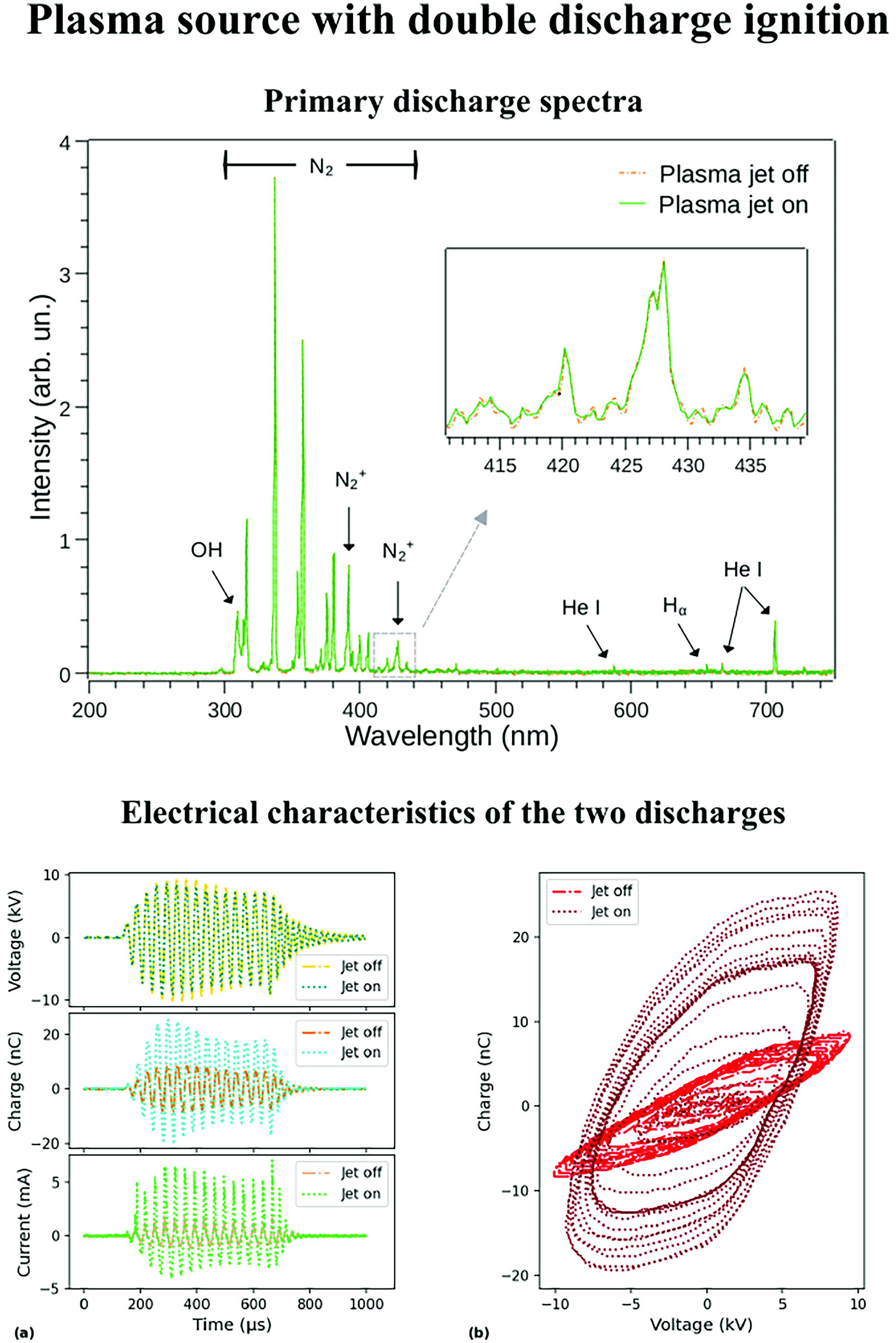https://doi.org/10.1140/epjd/s10053-024-00946-z
Regular Article - Plasma Physics
Measurements of power dissipated in an atmospheric pressure plasma jet device with double plasma discharge ignition
1
Faculty of Engineering and Sciences, São Paulo State University-UNESP, 12516-410, Guaratinguetá, Brazil
2
Leibniz Institute for Plasma Science and Technology-INP, 17489, Greifswald, Germany
Received:
22
October
2024
Accepted:
8
December
2024
Published online:
23
December
2024
Atmospheric pressure plasma jets (APPJs) are versatile devices with numerous applications. This work focuses on APPJs generated at the tip of long, flexible tubes using the jet transfer technique. The plasma source consists of a primary discharge and a secondary discharge forming the plasma jet. Discharge power measurements were carried out in a way that it was possible to separate the contribution of the primary discharge from the total power dissipated by the plasma source. Both power and effective current were analyzed under different operating conditions. The results show that the variation in the primary discharge power is much lower than the power dissipated by the plasma jet. Additionally, the electrical characteristics of the plasma device were analyzed. Notable differences were observed between the negative and positive phases of the discharge, with a more resistive load in the negative one, which suggests that the electrical equivalent circuit model changes according to the voltage polarity.
Copyright comment Springer Nature or its licensor (e.g. a society or other partner) holds exclusive rights to this article under a publishing agreement with the author(s) or other rightsholder(s); author self-archiving of the accepted manuscript version of this article is solely governed by the terms of such publishing agreement and applicable law.
© The Author(s), under exclusive licence to EDP Sciences, SIF and Springer-Verlag GmbH Germany, part of Springer Nature 2024
Springer Nature or its licensor (e.g. a society or other partner) holds exclusive rights to this article under a publishing agreement with the author(s) or other rightsholder(s); author self-archiving of the accepted manuscript version of this article is solely governed by the terms of such publishing agreement and applicable law.





